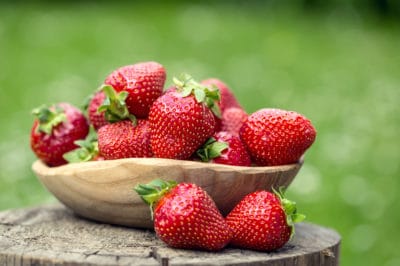Choose a June-Bearing Variety
No matter what else you do, choosing a June-bearing variety will have the biggest impact on the size of your berries. These will grow in USDA Zones 3 through 8. June bearers have only one goal – set a big crop of fruit in or around June. Everbearers and day-neutrals have to put energy into repeated flushes of bloom and bearing – they don’t have the energy reserves to grow big berries.
Grow As Annuals
The first harvest from June-bearing plants is always the biggest. After that the plant devotes energy to producing runners, so the next year’s fruit crop is smaller in size and the berries are smaller. As soon as your harvest is over, start watching the runners. Once they have begun to root and are growing well, cut them from the mother plants and transplant to a new bed.
Choose Certain Varieties
There are literally hundreds of strawberry varieties. Remember, your total crop weight may be the same size no matter what size the individual berries are. Some varieties, however, naturally produce larger berries than others. Among them are:
- Albion
- Allstar
- Chandler
- Diamante
- Douglas
- Fern
- Parajo
- Ventana.
Prepare the Soil Properly
Strawberries need fertile soil to produce their crops. Whether you plant in fall or spring – it depends on your USDA Zone – prepare your soil well ahead of time. Add plenty of aged manure, well-rotted leaf mold or organic compost. Consider working a long-acting granular organic fertilizer into the soil at the same time.
Locate the Patch Correctly
Strawberries must have full sun all day. It’s also best to avoid low-lying areas that may be prone to freeze in a cold snap. Although the plants are hardy, their blossoms can be damaged by frost. Don’t plant strawberries in ground where you have grown raspberries, blackberries, tomatoes, eggplants or peppers within the preceding three years – they may harbor diseases.
Manage the Beds Properly
Your strawberries will produce the biggest berries if you give them optimum care. Once you’ve sited and prepared the bed, focus on watering, weeding and insects. Give your plants at least one inch of water a week. Keep weeds down, as they compete for nutrients that would otherwise go into the fruit. Manage insect pests – while they won’t usually kill a plant, they drain vitality.
